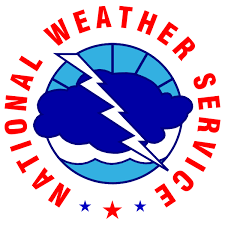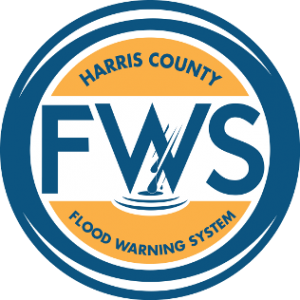In Houston, Texas, our university experiences a range of extreme weather, from hurricanes to heatwaves. This page offers vital tips to keep our Tiger family safe. Stay prepared and stay safe—we can weather any storm together.
Be vigilant for severe weather watches and warnings, including for thunderstorms, tornadoes, and tropical storms. Act promptly upon receiving a warning and stay prepared during watches.
On this page
Flooding
Every year, flooding claims more lives than any other storm-related hazard. Understanding what to do before, during, and after a flood can significantly increase your chances of survival.
Preparation Steps
- Identify flood-prone roadways and plan alternative routes. Check Traffic and Road Conditions.
- Ensure your essential electronics are fully charged, especially your cell phone, for communication during power outages or evacuations.
- Download “LiveSafe” to promptly receive university notifications during emergencies.
- Prepare a well-stocked emergency kit that can sustain you for at least 72 hours. Include essential items such as:
- Water (one gallon per person per day)
- Non-perishable food items
- Medications and first-aid supplies
- Flashlights, batteries, and a portable radio
- Personal hygiene items
- Important documents (identification, insurance policies, etc.)
- Cash and credit cards
- Clothing and sturdy footwear
Avoid Floodwaters
Remember – Turn around. Don't Drown. According to the Centers for Disease Control and Prevention, more than half of flood-related drownings occur when vehicles are driven into floodwaters.
- Flooded areas may conceal hazardous materials, live power lines, debris, and wildlife like snakes and alligators.
- The force of flowing water is formidable:
- Just 6 inches of swift water can sweep adults off their feet.
- A foot of moving water can carry away a small car.
- Between 18 to 24 inches of moving water can transport larger vehicles such as trucks, vans, and SUVs.
- Your presence in flooded zones could impede emergency response efforts. Wait for the official all-clear before returning.
Lightning
When lightning strikes:
- Refrain from bathing, showering, or any contact with water during a thunderstorm, as lightning can travel through plumbing.
- Use surge protector power strips to safeguard your electronic devices.
- Stay clear of concrete floors and walls, as lightning can exploit metal wires or bars within them.
- Upon sighting lightning, begin counting to 30. If thunder rumbles before reaching 30, seek shelter indoors. Wait at least 30 minutes after the last thunderclap before resuming activities.
If you are caught outside, use the following precautions:
- Avoid elevated areas like hills or towers.
- Move away from bodies of water such as ponds or lakes.
- Refrain from lying flat on the ground.
- Seek shelter away from isolated trees.
- Steer clear of objects that conduct electricity, including barbed wire fences and power lines.
Tornadoes
Tornadoes, characterized by violently rotating columns of air extending from thunderstorms to the ground, pose significant threats, capable of demolishing sturdy structures, uprooting trees, and turning objects into dangerous projectiles. These destructive phenomena can strike at any time of day or night, throughout the year.
How to Respond
- Take refuge in a secure location, typically the lowest floor of buildings, away from windows, and positioned centrally within the structure.
- Assist individuals with disabilities in finding shelter, if possible.
- Inform others as you move to safety.
- If feasible, bring a portable radio to stay updated on the situation.
- Remain in the safe area until the warning expires, and authorities confirm it's safe to exit.
- If caught in a vehicle, either crouch down and cover your head or abandon the vehicle and seek refuge in a low-lying area like a ditch or ravine.
- Report any damages or injuries to University Police. For life-threatening emergencies, call their emergency line at 713.313.7000; for non-life-threatening incidents, call 713.313.7001. Property damage reports may also be directed to Building and Grounds at 713-313-1462.
Learn more about Shelter-in-Place procedures for further safety measures.
Hurricanes
Hurricanes, tropical storms with sustained winds of 74 miles per hour or more, pose significant risks, often accompanied by torrential rains, high winds, and storm surges. The eye of a hurricane, typically 20-30 miles wide and extending over 400 miles, brings both awe and danger.
Before a Hurricane
- Stay Informed: Keep an eye on weather forecasts and alerts from reliable sources such as the National Weather Service and download “LiveSafe” to promptly receive university notifications during emergencies.
- Create a Hurricane Preparedness Kit: Assemble an emergency kit that includes:
- Non-perishable food and water to last for at least three days
- Medications and essential medical supplies
- Flashlight and extra batteries
- Battery-powered or hand-crank radio
- Backup power sources
- Personal hygiene items
- Important documents (identification, insurance papers, etc.)
- Secure Your Residence:
- Store outdoor furniture and loose objects indoors.
- Store personal items and valuables in safe, elevated areas within your dorm room to protect them from potential water damage.
- Power down and disconnect electrical devices.
- Close and lock doors.
- Develop an Evacuation Plan: Familiarize yourself with evacuation routes and shelters in your area. Plan for transportation if you need to evacuate.
- Follow Instructions: Follow any evacuation orders or shelter-in-place directives issued by authorities. Stay calm and follow safety procedures carefully.
During a Hurricane
- Stay Indoors: Once hurricane conditions begin, remain indoors and away from windows, doors, and exterior walls. Seek shelter in the most interior part of your residence, such as a bathroom or closet.
- Monitor Updates: Keep track of the storm's progress through weather updates and official communications from our institution or local authorities.
- Stay Connected: Keep your phone charged and stay in touch with friends, family, and roommates to ensure everyone's safety and well-being.
After a Hurricane
- Stay Safe: Avoid going outside until authorities declare it safe to do so. Watch out for hazards such as downed power lines, flooded areas, and debris.
- Assess Damage: Check your residence for any damage and report it to the appropriate authorities if necessary. Document any damage for insurance purposes.
- Help Others: Offer assistance to fellow students or community members who may need help with cleanup or recovery efforts.
Heat
Heat is one of the leading weather-related killers in the United States, resulting in hundreds of fatalities each year. Heat can be very taxing on the body.
During Heat Advisories
- Slow down. Reduce, eliminate or reschedule strenuous activities until the coolest time of the day.
- Dress for summer. Wear lightweight, loose fitting, light-colored clothing to reflect heat and sunlight.
- Minimize direct exposure to the sun. Sunburn reduces your body's ability to dissipate heat.
- Eat light, cool, easy-to-digest foods such as fruit or salads.
- Use air conditionersor spend time in air-conditioned locations.
- Take a cool bath or shower.
- Do not direct the flow of portable electric fans toward yourself when room temperature is hotter than 90°F. The dry blowing air will dehydrate you faster, endangering your health.
- Look out for symptoms of heat-related illnesses. Everyone can be vulnerable to heat, but some more are prone to heat-related illnesses than others.
- Heat cramps: Maybe the first sign of heat-related illness with painful muscle cramps usually in the legs, or abdomen with heavy sweating.
- Heat exhaustion: Heavy sweating, weakness, cool, pale clammy skin fast or weak pulse, muscle cramps dizziness, nausea or vomiting, headache.
- Heat Stroke: Throbbing headache, confusion, nausea, body temperature above 103 degrees, red or damp skin rapid and strong pulse, fainting.
Winter
Winter storms present various hazards including car accidents, hypothermia, frostbite, carbon monoxide poisoning, and heart attacks from overexertion. These storms can bring extreme cold, freezing rain, snow, ice, and high winds, posing significant risks to our community.
Preparation Essentials
Ensure you have the following supplies on hand to weather a winter storm:
- Blankets
- Emergency kit
- 3-day supply of non-perishable emergency food
- 3-day supply of water
- Medication
- Flashlight and batteries
- Battery pack for your phone
- Weather radio
Response Strategies
- Close off unneeded rooms to conserve heat.
- Seal gaps under doors with towels or rags.
- Keep blinds or curtains closed to retain heat.
- Stay nourished and hydrated to maintain body warmth and prevent dehydration.
- Dress in layers of loose-fitting, lightweight clothing to trap body heat while avoiding overheating.
- Open cabinet doors below sinks to allow warm air to circulate around pipes.
- Prevent freezing pipes by allowing faucets to drip slowly.
- Reduce your speed and drive cautiously, even if roads appear wet.
- Clear all ice and snow from your vehicle before driving to prevent accidents caused by flying snow.
- Inform someone of your travel plans and route to facilitate a search if needed.
- Equip your vehicle with an emergency kit, blankets, boots, and an extra coat in case of breakdowns.
- If you start to skid, remain calm, ease off the gas, and steer in the direction you want to go.
- If visibility is poor, pull over safely and turn off your lights to avoid accidents caused by following vehicles.
- Watch out for icy patches, especially on bridges which freeze before roadways.
- Immediately report leaking or ruptured pipes or any other building emergency to your building liaison, RA, or Building and Grounds during business hours (713-313-1462) or UPD (713.313.7001) after hours.







